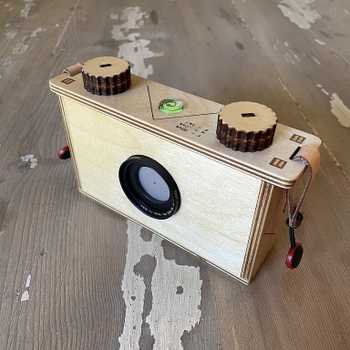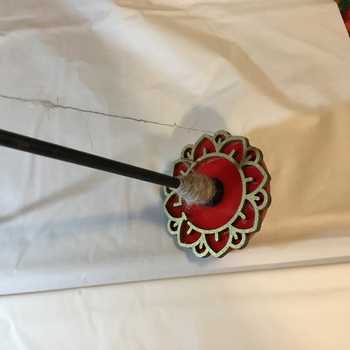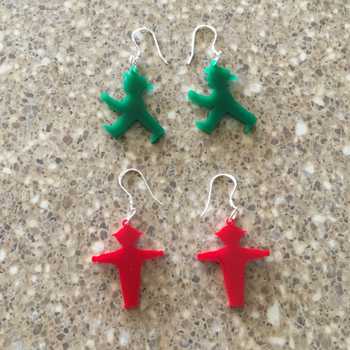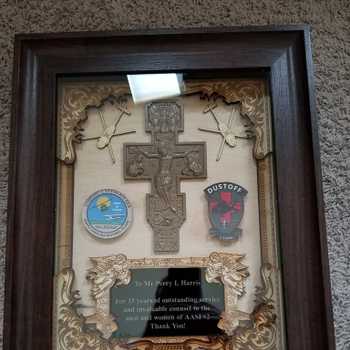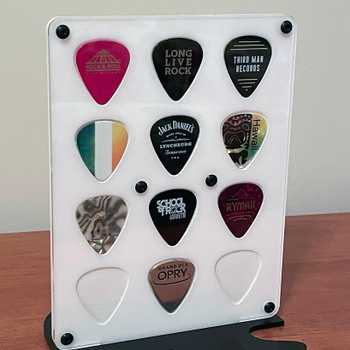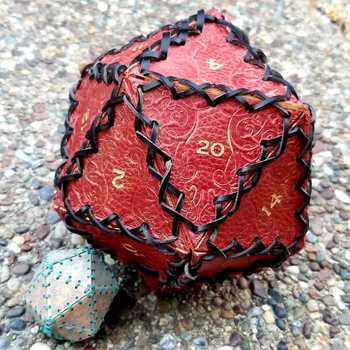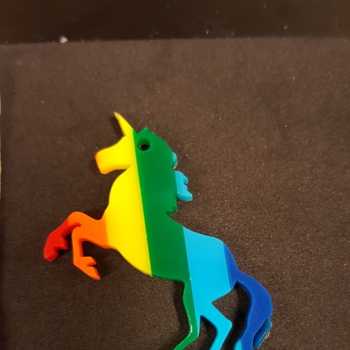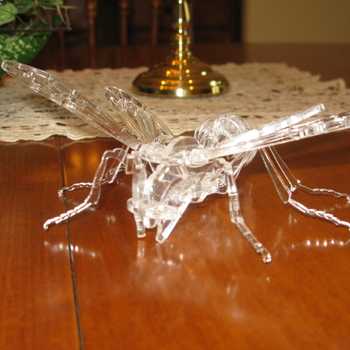My first big project, made as a birthday gift. I prototyped in cardboard at 3/4 scale before cutting the final piece. All design work was done in Inkscape, The scrollwork was cribbed from some antique banners and then customized for my layout. (MDCCCXCV is the date the building was built.)
For the bias-lit lettering I used two layers of 1/8" proofgrade clear acrylic (oops, no 1/4" on hand!) topped with some pre-painted 1/8" MDF. The (stained) wood is baltic birch.
The front layer is raised by an outline of more clear, scored acrylic, and behind the press-fit letters is a short string of those copper-strand warm white LED lights (I used some “Kohree” branded ones I had on hand) powered by a button battery. Sorry I didn’t take any pictures of the interior, but it’s basically lights taped in a zig-zag pattern and backed by white cardstock.
The diamond is clear proofgrade acrylic etched on both sides and lit at the tip with two LEDs from the strand.
Everything is held together with DAP Rapidfuse “Fast Curing All Purpose” adhesive from home depot. It was clean and easy to use and sets in just a few seconds, so you have limited time to re-position before things lock in place.
The stand is custom-made, the third iteration. I love how easy it is to prototype in cardboard and just nudge things around until they work…
Lessons learned:
- When bias lighting, consider cutting the top (opaque) layer slightly thicker/fatter than the lit layer behind.
- Outlines from cut parts make great jigs for precisely placing those parts (especially “bendy” pieces).
- Test score settings to ensure they aren’t deep enough to significantly weaken the material. I came very close to breaking the top layer before it was integrated.
- Keep and “original” and “flattened” version of designs in Inkscape (either in hidden layers or separate files) in case you need to make alterations.
- I now keep an svg handy called “just_a_line.svg” that I import to make extra cuts that aren’t in the original design file. I’m sure the web GUI will eventually have basic shapes built in, but until then…
- Adjusting for kerf is a bit of a pain in Inkscape. I appreciated the nice tutorials available here!
- If a design won’t load (returns to editing after “preparing design”), look for any layers that might have out-of-bounds elements. I had to re-create a vector object that somehow generated a strange out-of-bounds element once “prepared”, but it took nearly 45 minutes to finally track down the problem!
